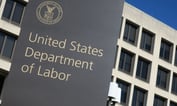Average retirement savings account balances continued to increase in the second quarter, reaching near-record levels after dipping at the end of 2018, Fidelity Investments reported Wednesday.
The second quarter average 401(k) balance rose by 2% to $106,000 from the first quarter. The average balance was also up by about 2% from $104,000 in second quarter of 2018.
The average IRA balance increased to $110,400, a 2% increase from last quarter and 3% higher than a year ago. And the average 403(b)/tax-exempt account balance rose to $88,600, a 3% increase from last quarter and 6% from the year-ago quarter.
According to the report, the number of people with $1 million or more in their 401(k) account shot up to a record 196,000 from 180,000 at the end of the last quarter, while the number of IRA millionaires increased to 179,700, also a record high and an increase from 168,100 last quarter.
Employees contributed at a record-setting rate of 8.8% in the second quarter, nearly one percentage point higher than 10 years ago, the report said.
Thirty-two percent of savers increased their contribution rate in the April-to-June period, the highest quarterly percentage ever and nearly three times the 11% of savers who bumped up their contribution rate in the 2009 second quarter.
Among millennials, 38% of workers increased their savings rate, while 34% of women did so.
“The record number of workers who increased their 401(k) contribution rate is a great indication of how focused Americans are getting about saving for retirement,” Kevin Barry, president of workplace investing at Fidelity Investments, said in a statement.
“Increasing your contribution rate, even by 1%, can make a big difference in your long-term retirement savings — what may seem like a small amount today can have a significant impact on your account balance in 10 or 20 years.”









 August 23, 2019 at 06:26 PM
August 23, 2019 at 06:26 PM











